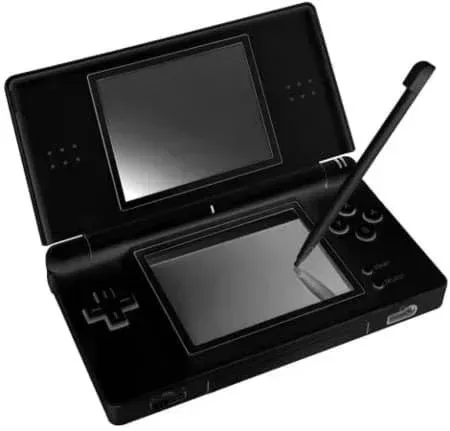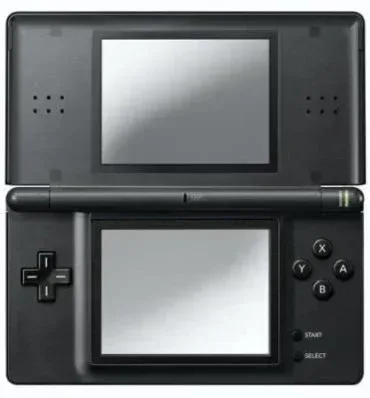
Although we all love a good Nintendo 64 game, we have to admit that it was Nintendo’s handheld consoles – the GameBoy, GameBoy Color, GameBoy Advance, etc. – that really made an impact during the 1990s and early 2000s. Nintendo’s handheld consoles were amazing and they brought us popular gaming hits such as The Legend of Zelda and Pokémon. These handheld consoles are popular even today, as the Switch is one of the best-selling consoles of the modern era. This is why I have decided to dedicate today’s article to these handheld consoles for you to enjoy!
The Nintendo DS and Nintendo DS Lite can play GameBoy Advance games, but not the original GameBoy or GameBoy Color games. This is due to the newer consoles’ different designs and the lack of a special processor that the older consoles used.
In today’s article, I am going to tell you everything you need to know about the new Nintendo DS and Nintendo DS Lite consoles, as well as information on whether they can play older GameBoy, GameBoy Color, and GameBoy Advance games. This is going to be a very interesting text for all those interested so I hope you’ll enjoy it!
Explaining the Nintendo DS and Nintendo DS Lite
The Nintendo DS is a handheld game console developed and produced by Nintendo, released in 2004. It is visually distinguished by its open-and-close design, and the presence of two screens, the lower one being touch-sensitive.
The system also has a built-in microphone, and supports wireless connection via Wireless Local, allowing interaction between players within a small area (9-30 meters, depending on conditions), or via Nintendo Wi-Fi Connection, which allows online multiplayer with players from all over the world.
The lower screen of the Nintendo DS is on top of a pressure-sensing touchscreen, designed to accept commands from the stylus that comes with the console, the player’s fingers, or the thumb stylus: a plastic rectangle that can be added to the security thread that comes with the device. The touchscreen allows players to interact with game elements more directly than pressing buttons.
The more traditional control modes are located on either side of the touchscreen. On the left is a stick, with a small power button above them, and to the right are the A, B, X, and Y buttons, with the Select and Start buttons just above them. The L and R buttons are located on the upper left and right edges of the system’s bottom respectively. The arrangement of the buttons can be compared to that found on the SNES controller.
The Nintendo DS features stereo speakers, which allow for surround-style sound (depending on the software), located on either side of the top of the system. This feature is unprecedented on a Nintendo handheld, as the entire GameBoy lineup only supported stereo sound through headphones or external speakers.
Nintendo’s own firmware starts up with the system; through it, the user can choose between playing a GameBoy Advance or Nintendo DS game, using PictoChat, or searching for games, software, or download settings, music, videos, and various programs.
The latter is an adaptation of the GameBoy Advance’s popular “single-cartridge” multiplayer system, modified to take advantage of the system’s wireless functions: players without the game search for content, while players with the game stream it.
The PictoChat program, which is permanently saved to the unit, allows users to communicate with other Nintendo DS players, within the coverage zone, by text, handwriting, or drawings, using the DS touchscreen as input; an on-screen keyboard partly covers the touch-sensitive area while this mode is used, allowing message typing.
The DS main menu features an alarm clock and the ability to set preferences for launching games (running them when entered, or always going to the main menu), screen usage in GameBoy Advance games (from above or below), and user information (name, date of birth, favorite color, etc.)
The device has a mass of approximately 275 grams. Its size is 148.7 x 84.7 x 28.9 mm (5.85 x 3.33 x 1.13 inches). It features two separate LCD screens of 3 inches each, both with a resolution of 256 x 192 pixels. The space between the two screens is approximately 21mm, the equivalent of 92 “hidden” lines.
The lower screen of the Nintendo DS has a layer that uses the touchscreen function, which records the pressure of one dot on the screen at a time, calculating multiple dots if necessary.
The system uses two separate ARM architecture processors, an ARM946E-S main CPU and ARM7TDMI coprocessors at clock speeds of 67 MHz and 33 MHz respectively, with 4MB of main memory, which requires 1.64 volts. The system’s 3D hardware features transform and lighting, texture-coordinate transformation, texture mapping, alpha blending, anti-aliasing, Cel-shaded animation and z-buffering technologies.
Entertaining the Point texture filter by making some surfaces have a blocky appearance. The system is in theory capable of rendering 120,000 triangles per second at 30 frames per second. Unlike most 3D hardware, it has a limit on the number of triangles that can be part of a single scene; this limit is in the region of 4000 triangles. The 3D hardware is designed to render one screen at a time, so rendering two screens is difficult, slowing performance significantly. However, some games run in 3D on both screens simultaneously at certain times, still maintaining good performance and quality.
The system has two 2D fronts, one for each screen. They are similar (but more powerful) than the front found on the Game Boy Advance. The games use a “Game Card” format, similar to that found as removable memory in mobile electronics such as digital cameras. It supports cards up to 2 gigabits (2048 megabit) of space (used in ASH – Archaic Sealed Heat for example).

Cards usually have a small amount of flash memory for saving user data, such as game progress or highscores. Nintendo DS Game Cards are 33.0 x 35.0 x 3.8 mm, and weigh about 3.5 grams. The unit features networking capabilities for multiplayer games or chat using Wi-Fi.
Many newer games can use the Nintendo Wi-Fi Connection network to communicate and play games with players around the world using any Wi-Fi router or the Nintendo Wi-Fi USB Connector for conventional internet modes as well as providing direct DS-to-DS communication using the old system.
Nintendo DS Lite is a second version of the Nintendo DS, released in March 2006, 2 years after the original release. It features a brighter screen, less weight, a more durable battery, a thicker stylus, and softer buttons. Now available in white, black, silver, blue, pink and the new colors (for a higher price) red, green and yellow. It also has accessories (which must be purchased individually), headphones, and a bag to store games and (soft, or hard and to be put on a belt).
Nintendo DSi is the third version of the Nintendo DS, released in November 2007. It is slightly larger than the DS Lite. New features include two 0.3 megapixel cameras, a larger 3.25″ screen, Wi-Fi WPA internet compatibility, and an SD card slot. Removed Game Boy Advance cartridge backward compatibility.
Nintendo DSi XL (called the DSi LL in Japan) is the fourth version of the Nintendo DS, it was released in November 2009, among the features are the biggest of all models with 4.2 inches with a better viewing angle and a battery with a longer duration.
Nintendo and backward compatibility
Now that we know all the information on the console, we can discuss Nintendo’s general stance towards backward compatibility. As far as older consoles are concerned, Nintendo did, initially, allow backward compatibility.
This meant that you could play your GameBoy games on your GameBoy Color, and games for both these consoles on your GameBoy Advance. But, once the GameBoy brand was discontinued and replaced with new generations of consoles, backward compatibility stopped being a thing, mainly because of the enormously different technology between the new consoles and the old ones.
In the final section of this article, I am going to explain how backward compatibility works on Nintendo DS.
Can the Nintendo DC play GameBoy games?
Based on everything we’ve established so far, you could probably deduce an answer yourself. But, in order to give you the best possible answer, I shall directly quote Nintendo on the issue. This is the answer you can find on Nintendo’s official FAQ (Source):
What they can play:
- Game Boy Advance games in single-player mode only
- Game Boy Advance videos
What they cannot play:
- Original Game Boy or Game Boy Color games
- Game Boy Advance games in multi-player mode
Why there are limitations:
There are two main reasons that the Nintendo DS and DS Lite are not compatible with older software:
- The system is designed for wireless play and lacks a link cable port. Because older games aren’t designed to use wireless features, they can’t communicate for multiplayer games.
- The Nintendo DS and DS Lite systems lack the special processor that is required to play these games. Because of the age of the processor, and the difficulty in adding that processor to an already highly complicated architecture, the processor was not included in the final design of these systems.
